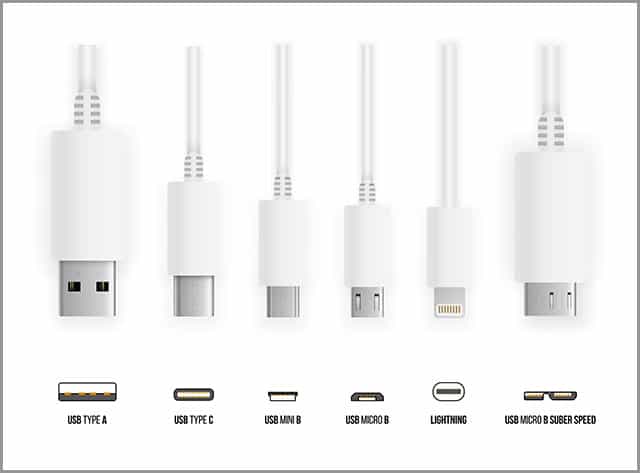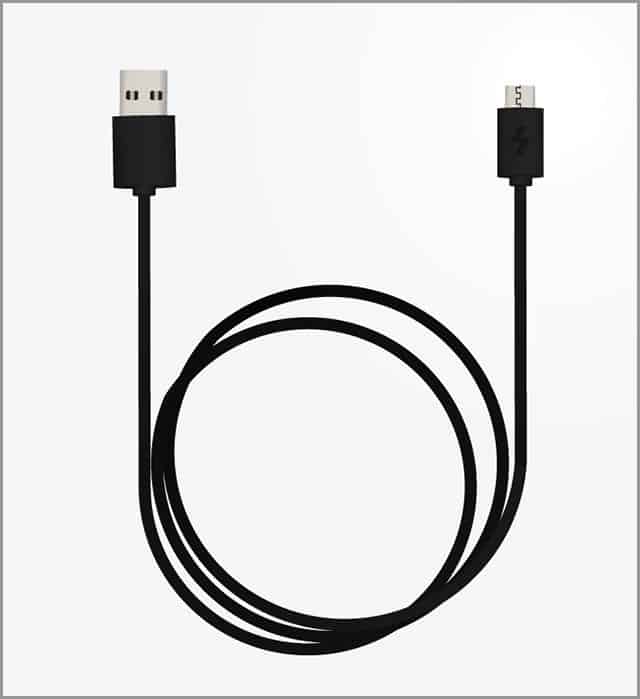Why do you think the USB cable is essential? USB cables are probably one of the simplest yet complex sets of cables. These cables differ according to their uses. They appear in various sizes and are used to transfer data, information, and signal from different a host and another device.
USB cables are compatible with various devices. To get the best satisfaction from the USB cable, you must have a deeper understanding of its structure. Are you ready?
Get Your Free Sample!
Explore our custom services now. Email us at sales@wiringo.com for more details.
Chapter One:What Is USB?

USB is an acronym for Universal Serial Bus. It is an interface that encourages ease of communication between devices and a host. USB connects various devices such as digital cameras, scanners, printers, and so many more. They are used for electrical supports and have replaced interfaces such as parallel and serial ports. It is specially designed to aid easy installation, quicken transfer rate, and hot-swapping.
USB Cable–FEATURES OF USB CABLES
The USB cable has various features that make it unique. Some of these features are:
USB Cable–Hot swapping:
This is a unique feature of the USB cable, where a device can be removed/replace without disturbing the system. It makes sure that the system is not interrupted by booting. Hot swapping can control the operating mechanism despite an unforeseen hardware abnormality. It is also important to pay attention to certain areas when hot-swapping certain devices such as a camera in as much as this true. A little mistake in hot swapping can ruin the port of the device.
USB Cable–The use of Direct current:
This is a unique feature of the USB cable that enables it to receive direct current without necessarily transferring data. In this way, it is easier to transit current just by connecting the USB cable to the desired device.

Chapter Two:Types Of USB Cable
There are a variety of USB cables. These cables perform different functions and can use in different ways. Hence, it is pertinent to understand these cables and their compatibilities. They are:
USB Cable–USB TYPE A:
It is commonly referred to as a USB standard A connector. It is one of the safest USB cables around and also very common as widely used. Its use is also second none and is generally considered a must-have. The cable comes in both flat and rectangular shapes. It is also used on host controllers in computers. The USB Type-A socket provides a downstream connection for host controllers on computers but also sometimes used as an upstream connection in the peripheral device.
USB Cable–Application
These cables typically use to connect peripheral devices such as scanners, printers, and flash drives.USB Type-A male uses to make the connection between two USB A style female ports. However, it would help if you did not encourage connecting two hosts or computers or computers to a hub using the same A-A cable.
USB Type B: Also known as the USB standard B connector. This USB type is compatible with USB peripherals such as a printer or upstream port, or hub. It has a rounded square shape. This USB has lost its grounds as it has become the least favored because of other sophisticated types.
USB Cable–Application
It connects to the USB peripheral device peripherals or more. It forestalls the risk associated with connecting two host computers.
USB Cable–Mini B:
Just like the name presupposes, it is a smaller type of USB cable. It has five pins, which include an extra ID pin to support USB On-The-Go (OTG). This extra USB pin allows mobile devices and some peripherals to act as the USB host. However, this USB type has a substitute in the form of the micro USB. The advent of well-designed and portable phones has made the micro USB no longer relevant as it was before.
Application
You can find the Mini B USB cable on your digital camera and MP3 player. Its socket design is suitable for small peripherals.
Micro B:
It is a USB cable type that is designed to maintain the ability to connect computers and other hubs irrespective of the size of the mobile device. Just like the Mini B cable, the Micro B cable also has five pins to support USB On-The-Go (OTG).

Application
This cable works just like the computer system. It connects to all kinds of portable devices. It enables mobile devices to access external drives, digital cameras, Bluetooth headphones, and other peripherals. To make this feasible, it needs to be compatible with other devices using the right wiring connection in the cable assembly.
Lightning cables
Lightning cables are not exactly cables in the real sense of the word but can act as a substitute for cables. This cable is reversible just like USB Type C.
Application
This cable is essential for charging iPhones, Personal computers, and iPads. For this purpose, connect it to the USB A type cable.
USB Cable–USB TYPE C:
This is the most recent USB interface. Unlike USB Type-A and USB Type B, the USB Type C is suitable on different devices that have USB ports. Modern electronic devices such as laptops and cellphones make use of this cable type. It is quite confusing, and its usage varies according to devices.
USB Cable–Application
This cable is compatible with different devices. Lots of manufacturers have come to adopt it in producing technological innovations. Manufacturers of Apple phones and Samsung use the USB Type C cable. It enables ease of transfer of data at a considerable speed level. This cable type supports the use of high-resolution displays such as HDMI and Display Port.

Get Your Free Sample!
Explore our custom services now. Email us at sales@wiringo.com for more details.
Chapter Three:USB Speed Standards
The speed level of the various USB type varies according to its structure and feature. The various standard of speed are:
USB 1.x
Another name for USB 1.x Full speed USB. It can operate at a different speed; Such as Low Bandwidth or Full Bandwidth. Launched USB 1.0 in 1996, but in August 1998 released USB1.1.
How is it now?
It is no longer as popular as it was in the ’90s because its speed was considered rather too slow
USB 2.x
It is known as Hi-speed USB. It is an external device that supports the structure of USB1.1 together with the same cables and connectors.
USB Cable–How is it now?
It supports faster speed than the USB 1.x and also supports the introduction of new ports. Asides from that the speed of USB 2.x allows two separate devices to communicate without obstruction. A typical example is a use of an adapter on a computer keyboard and a mobile phone. The adapter can use to charge the phone properly without experiencing any difficulty whatsoever.
USB 3.x
It is the fastest of all the USB cables. Any USB cable termed USB 3.x is the fastest of all cable types. It launched in 2008 and provided more speed than USB1.x and USB2.x put together.
How is it now?
USB3.2 is the latest model of USB 3.x.It encompasses all the features of older versions and is extremely fast. The USB 3.2 comes in three different forms; USB 3.2 Gen 1, USB 3.2 Gen 2, and USB 3.2 Gen 2X2. The newest form of USB is the USB 3.2 Gen 2X2. One notable feature of the USB 3.2 is its super speed. The USB 3.2 product uses the type C connector. To ensure compatibility between these and older cables, an external connector, such as an external hard drive, must be used.
Chapter Four:Some Advice When Using Custom Cable
It is always fun to use USB cables for very reasons and to suit the needed plans. Nevertheless, it is also helpful to understand the basic makeup of these cables and how to handle them to prevent mishaps or disasters.
USB Cable–The wire size:
The wire size is an important factor to consider when choosing a cable. It is because the size of the wire determines the amount of current that can pass through the wire. If the wire is too small for the capacity of current that passes through it, it could damage the wire.
The length:
The length of the cable ensures that the current functions properly. If the length of the wire is not large enough or if it is more than needed, the resistance is higher and this, therefore, results into fewer watts in your battery bank or grid.
USB Cable–The type of connector:
The user of the cable should determine the type of connector to use. The connected device determines the type of connector used. The user can either favor connector A, connector B, or connector C or decide between a male or female port/connector.
USB Cable–With or without shielding:
When you select a USB cable, determining the cable shield is also essential. It is always important to shield the cable to prevent the hazard from the environment. If the USB is masked and the current is strong, it can cause damage to insulation as a result of leakage of current.

The packaging:
The packaging of cables is a topic that is considered irrelevant. Ironically, it is one of the most crucial factors in choosing a cable. The packaging should be such that makes the cable water-resistant and easy to handle. Failure to package the cable properly can result in an increase in cost or worse still damage the cable itself.
Chapter Five:More About USB Cable
There are so much more about USB cables. They are:
USB Cable–USB extension cable:
This cable can is extendable. It can be extended to cover a reasonable distance between devices.
Application
It can be connected to flash drives
USB Cable–Printer cable:
It is convenient in connecting a printer to a computer.
Application
The printer cable transfers information from the printer to the computer. It transmits various information like ink level and paper status. Individuals make use of printer cables for printing.

USB 3.0 extension cable:
This cable is used to transmit signals passing through the USB cable and ensure the signals’ quality.
Application
The USB 3.0 extension cable is suitable for charging mobile phones. Not compatible with USB 3.0 or 2.0 ports. It aids data transfer. It facilitates connection to personal computers.
Conclusion
USB cables appear quite difficult to manage but are the easiest to handle. They come in various colors and help to charge appliances such as personal computers and mobile phones. The various types of USB cables are compatible with different devices.
Our services provide the needed guide to establishing a safe connection and preventing hazards in the home and work environment. You have any questions or you’ll like to know more about USB cables, please feel free to contact us, and we’ll be happy to help!
Hommer Zhao
Hommer Zhao serves as Director of Wiringo, leveraging a wealth of expertise in custom wire harness and cable assembly.
Drawing on more than a decade of hands-on expertise in the electronics field, Hommer focuses on wire harness manufacturing, custom cable assembly, and expedited restricted product production. His operations include a pair of wire harness production facilities and two dedicated PCB manufacturing & PCBA sites, all strategically located across Shijiazhuang, Shenzhen, Jiangmen, and the Philippines.
Hommer frequently refers to resources like Wiring Harness News for up-to-date insights and methods related to wire harness production.
Beyond his research and reading, Hommer also contributes to the Wiring Harness Manufacturer’s Association (WHMA), which offers invaluable resources and professional guidelines to wire harness specialists.
Get Your Free Sample!
Explore our custom services now. Email us at sales@wiringo.com for more details.



